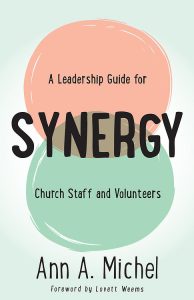Ann Michel of the Lewis Center staff says church meetings should be holy ground where the Spirit can act because the people of God are gathered in common purpose. She offers seven simple strategies for making meetings more positive and productive.
Most church leaders see meetings as an inevitable but regrettable part of church life. But if we really believe Christ’s promise that “wherever two or three are gathered in my name, I am with you,” shouldn’t our meetings be holy ground — places where the Holy Spirit can act because the people of God have gathered in common purpose? Seven simple strategies can help your church meetings be productive venues for advancing God’s mission.
1. Know your purpose
Every time you call a group together you should be clear about the objective of the gathering. The corollary of this is: don’t meet just to meet. If a group is meeting largely because the members enjoy getting together, then it has become a social group. There’s nothing wrong with a social group, if that’s the group’s purpose. But if the social group is supposed to be the worship team, it’s hard to explain to someone new why so much time is spent visiting. The essential foundation of an effective meeting is clarity about what the meeting needs to accomplish.
Perhaps the most critical meeting management skill is helping a group come to a decision. Listen carefully to the drift of conversation and be attentive to threads of agreement.
2. Create a game plan
Once you are clear about the purpose of your meeting, a well-crafted agenda is the next critical element. But a productive meeting requires more than just having an agenda. Marching a group through an opening prayer, minutes, old business, and new business usually won’t provide enough structure to support your group’s work. You need a good agenda. And a good agenda is a game plan for how the meeting will accomplish its purpose. This requires forethought and advance preparation. What information is relevant to the discussion? What key questions will help the group think through the relevant issues? Who needs to be at the table? It often means you need to consult in advance with key members of the group or other groups to shape your agenda.
3. Maximize participation
Meetings are dreadfully boring for attendees when they’re placed in a passive role — when they’re forced to endure endless reports or listen and nod as someone presents a pre-formulated plan for their approval. The consequence of dull meetings is more than just a few yawns or nodding heads. Meeting participants lulled into boredom are unlikely to surface all the issues and concerns that need to be brought to the table. The consequence can be poor decisions. So, build your agenda around some well-framed discussion questions. And allow enough time for open discussion before moving too quickly to solutions. As conversation takes shape, be deliberate about drawing less active people into the discussion. And in larger groups, it’s generally helpful to break into smaller conversation clusters for portions of the meeting.
4. Keep reasonable time limits
Regular meetings are best kept to 90 minutes or two hours at the most. If you’re chairing the meeting, it’s your responsibility to monitor the use of time and keep things moving or find acceptable ways of wrapping things up. Be realistic about the length of time it will take for a group to handle the business at hand. It’s better to spread the work over several meetings than frustrate a group with an overly ambitious meeting plan. To keep information sharing from crowding out active discussion, ask members to provide written updates in advance of the meeting or spread reports over several different meetings. Something as simple as leaving reports until the end of the meetings can keep them from gobbling up too much time.
5. Allow space for the Spirit to work
Often, the only difference between our church meetings and meetings in secular settings is a brief opening or closing prayer, but what goes on between these spiritual bookends is unaffected. What if instead we frame issues with relevant Bible study? Or stop in the midst of a group’s deliberations to ask, “Where do you see the Spirit’s presence in this discussion?” Or take time to pray in the face of disagreement or uncertainty? If group leaders do not model this type of spiritual inquiry, others will easily fall back on secular decision-making norms.
6. Drive decisions
Perhaps the most critical meeting management skill is helping a group come to a decision. Listen carefully to the drift of conversation and be attentive to threads of agreement. It can be helpful at key junctures simply to name where you hear commonalities. Even if your group doesn’t generally make decisions by vote, a quick vote can be an expeditious way of moving forward if a consensus is apparent. If you’re not sure whether a decision has emerged, a quick, nonbinding straw poll can reveal where things stand. I’m generally surprised to find there is more consensus than I think, perhaps because debate tends to center around objections, even if they are not held by the majority present. Good leaders drive commitment by extracting all opinions, ideas, and views, and then having the courage to move ahead.
7. Monitor follow through
You can have the best meeting ever, but if nothing comes of it after people leave the room, they will still end up feeling that the meeting was a waste of their time. So never leave a meeting room without clarifying exactly what was decided. A simple method of enabling follow through is to put together a written summary of the meeting — not formal minutes — but a quick summary of agreed-upon actions that can keep everyone accountable to their commitments.
This article is adapted from Synergy: A Leadership Guide for Church Staff and Key Leaders by Ann A. Michel. Copyright © 2017 Abingdon Press. Used by permission. All rights reserved. Synergy is available at Cokesbury and Amazon.
Related Resources:
- Working with Committees and Boards by Alan Rudnick
- Death by Meeting, reviewed by John Winn
- A Consensus Model for Conducting an Annual Meeting by Heber Brown







